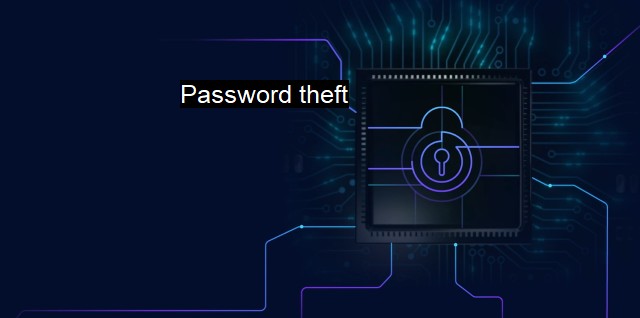What is Password theft?
The Rising Threat of Password Theft in Cybersecurity: Ways to Protect Your Digital Data and Accounts
Password theft, often a crime committed is the act of stealing or obtaining someone's password unlawvably to access privileged, confidential, or sensitive information. It is one of the oldest forms of cybercrime and continues to thrive because of its simplicity and high success rate. Cybercriminals employ various tactics and sophisticated techniques to steal passwords, flagging the necessity for robust cybersecurity measures such as antiviruses.Password theft is central to most cybercrimes because passwords are standard security measures across computers, networks, applications, and online platforms. Once a cybercriminal accesses a user's password, they gain unauthorized entry into the user's account, leading to potential data theft, financial loss, identity theft, or even a full-scale network intrusion.
Keyloggers represent one prevalent method of password theft where a malicious software — termed malware — is installed on a victim's device, which records keystrokes made by the user and transmits them back to the cybercriminal. This allows hackers to obtain not only passwords but also credit card details, social security numbers, and other sensitive data inputs.
Phishing scams are also commonly used to steal passwords. Usually, a user receives an unexpected email or message that appears to come from a legitimate organization- perhaps a bank or an online service provider. The communication will typically instruct the user to enter their password on a fraudulent, though legitimate-appearing website, thereby exposing their password to the scammer.
Password theft may also occur due to what's called 'brute force attacks.' In these attacks, hackers utilize software that attempts to crack a password by trying thousands or even millions of combinations in rapid succession.
Ransomware is another form of malware that cybercriminals use. It locks the victim's data or system until a ransom is paid. The attackers often gain access to systems through infected email attachments or websites, where they steal the users' passwords and then lock their systems.
In an all-too-common practice known as credential stuffing, passwords from one breached site are used across other platforms, banking on users' habit of reusing passwords. Once a breach in a site reveals passwords, hackers can proceed to attempt the exposed username-password combo across several websites, potentially gaining access to multiple accounts.
Considering the high risk of password theft, cybersecurity measures such as antivirus software play a crucial role. Antivirus software can prevent, detect, and remove malware that can steal passwords. They examine the data traveling through the network, looking for known threats and monitoring the behavior of all programs, identifying anomalies indicative of probable threats.
Apart from antivirus software, complementing security tools like password managers and two-factor authentication (2FA) help safeguard passwords. Users can employ password managers to store & secure complicated, different passwords for each site. Two-factor authentication adds another layer of security by requiring an additional proof of identity beyond the password.
Securing wireless networks, avoiding suspicious emails, not sharing passwords, and keeping systems up to date is critical for individuals and corporations to protect themselves from password theft. Passwords should ideally be complex, including a combination of letters, numbers, and symbols and should be changed regularly.
While the potential for password theft continues to escalate alongside advancements in technology, necessary awareness, the presence of antivirus and other cybersecurity tools might counteract the associated threats effectively. The fight against password theft is ongoing; it's an indispensable part of maintaining cybersecurity — and a critical responsibility for all internet users.

Password theft FAQs
What is password theft?
Password theft is a type of cyber attack where an unauthorized person gains access to your login credentials without your knowledge or permission.How do hackers steal passwords?
Hackers can steal passwords using various methods such as phishing attacks, malware, brute force attacks, social engineering, and sniffing.What can I do to protect myself from password theft?
To protect yourself from password theft, you should use strong passwords, enable two-factor authentication, avoid using public Wi-Fi, keep your software up-to-date, and use antivirus software.What should I do if I suspect my password has been stolen?
If you suspect your password has been stolen, you should change your password immediately and monitor your account for any suspicious activity. You should also report the incident to the appropriate authorities and consider using a password manager to create and store strong passwords.| | A | | | B | | | C | | | D | | | E | | | F | | | G | | | H | | | I | | | J | | | K | | | L | | | M | |
| | N | | | O | | | P | | | Q | | | R | | | S | | | T | | | U | | | V | | | W | | | X | | | Y | | | Z | |
| | 1 | | | 2 | | | 3 | | | 4 | | | 7 | | | 8 | | |||||||